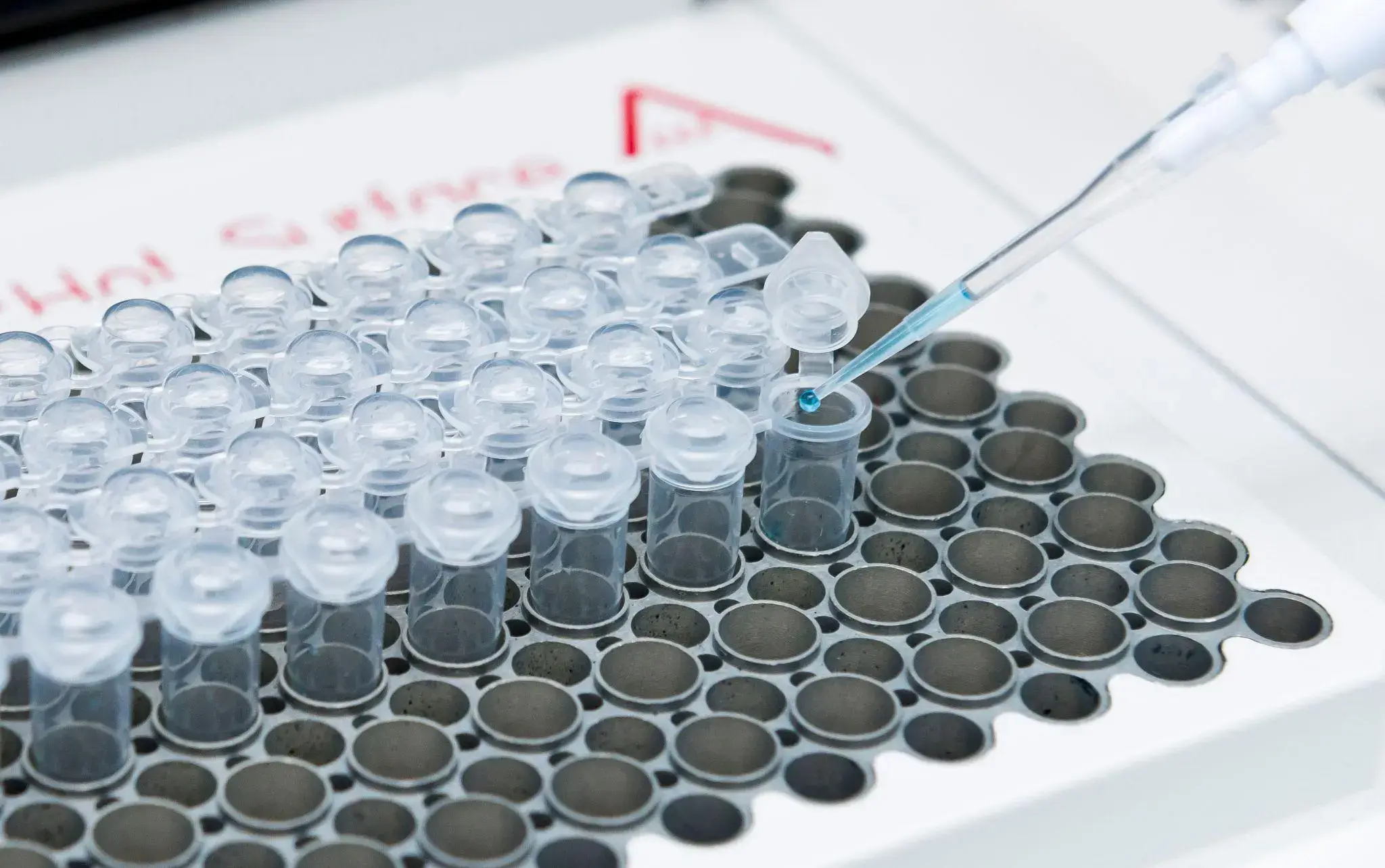Looking for something?
Amazon Prime for DNA – Has A New Era of Oligonucleotide Synthesis Begun?

Phosphoramidite chemistry has been used for decades to write synthetic DNA, but challenges arise when longer, more complex oligos are needed. After years of innovation fueled by the goal of meeting this need, Ansa Biotechnologies announced de novo synthesis of a 1005 base long oligonucleotide with industry-leading accuracy. Not only that, but they are also beginning an early access program to help researchers obtain clonal synthetic genes with sequences that were previously difficult to synthesize.
Daniel Lin-Arlow, PhD, CEO and co-founder of Ansa Biotechnologies explained, “Our extremely long Ansamer oligonucleotides will enable us to manufacture genetic constructs for researchers much faster, more reliably, and with fewer sequence limitations than what is currently possible.”
Synthetic DNA is needed for a wide range of applications. Gene-length synthetic DNA is needed for uses such as protein engineering, cell and gene therapies, fundamental life sciences research, and biomanufacturing. Single-stranded DNA can be used as the scaffold for DNA nanotechnology, the donor DNA for CRISPR-Cas9 systems, carrier for drug delivery, and in molecular diagnostic, DNA-based data storage, and various nanoscale applications (1).
Current DNA Writing and Existing Limitations
The phosphoramidite chemistry methods are excellent for writing short, uncomplicated oligos. Yet for sequences containing more complex features with multiple repeats, high GC or AT content, strong secondary structure, or long homopolymer stretches, these methods are not sufficient as they hold intrinsic limitations. This is a problem since many of the complex features are essential to the function of the DNA.
As there are natural limitations of chemical reactions, the nucleoside phosphoramidite method has reached a plateau in the ability to significantly improve the length or quality of oligonucleotides produced. Phosphoramidite chemistry-based methods also limit the length of synthesized oligos to 200 nucleotides in general and theoretically cannot exceed 300 nucleotides (2). With these methods, longer sequences are made by “stitching together” shorter oligonucleotides, but doing so can result in errors.
Generally, there is an exponential rise in effort and cost as the size of the genome being synthesized is increased. With current methods, the cost to synthesize an entire genome is very high because of the “chemical reagent consumption during oligo synthesis, as well as sequencing validation and correction steps” (3). Additionally, the DNA assembly and testing process is time and labor-intensive, which also greatly increases the cost (3).
As Song et al. said, “Our capacity to write DNA sequences still lags far behind our ability to read them” (3). Thus, many different methods have been investigated to increase accuracy and length, including improvements in chemical synthesis, various methods of enzymatic synthesis, and bacteria-based production of ssDNA (1).
A New Approach
Sebastian Palluk, PhD and Daniel Lin-Arlow, PhD, who are now the co-founders of Ansa Biotechnologies, described their method in a 2018 issue of Nature Biotechnology (2).
In brief, their enzymatic DNA synthesis method uses template-independent polymerase terminal deoxynucleotidyl transferase (TdT) conjugated to a single deoxyribonucleoside triphosphate (dNTP) molecule that can be incorporated into a short DNA primer attached to a solid support. After the tethered dNTP is incorporated, the 3’ end of the primer is still covalently bound to TdT, so it remains inaccessible to other TdT-dNTP molecules until the bond between the TdT and the incorporated nucleotide is broken. Cleaving the linkage releases the primer, allowing subsequent extension (2). Using TdT-dNTP conjugates allows for rapid and controlled single nucleotide additions to a growing DNA molecule.
Their proprietary technology was recently used to create a 1005 base long oligonucleotide, the world’s longest DNA oligonucleotide that was produced in a single synthesis. This particular sequence encodes a key portion of an AAV vector that contains complex features with high GC content and strong secondary structures. The 1005 base sequence can be used for gene therapy development. According to Ansa’s press release, “the Ansamer™ oligonucleotide was cloned using standard molecular biology techniques and found to contain approximately 28% sequence-perfect molecules, indicating an industry-leading average stepwise yield of approximately 99.9% during its synthesis.”
Using this method, Ansa’s enzymatic DNA synthesis technology is capable of rapidly synthesizing long and complex sequences, is fully enzymatic, does not damage DNA during synthesis, and is environmentally friendly with no harsh chemicals.
A New Service Supporting Future Research
Rather than create a bioprinter that researchers can buy to create their own DNA, Palluk and Lin-Arlow have chosen to develop their business as a DNA synthesis service. Daniel Lin-Arlow explained that, among other reasons behind the decision, this choice “gives us a much greater ability to vet orders for biosecurity risk before we manufacture them.”
In 2022, Ansa secured $68 million in funding that allowed them to expand the research, engineering, and bioinformatics and operations teams, as well as its physical R&D and manufacturing footprint. All this moved them toward the ultimate goal of speeding up the development of their technology, building fast-moving DNA synthesizers, and launching the synthesis service.
Northpond Ventures was an investor, and Lily Li, Ph.D., one of the principals at Northpond said, “Currently, the ability to write long and complex DNA is a critical bottleneck in the broader life sciences industry. We believe Ansa’s fully enzymatic process of DNA synthesis will usher in a new era in which the delivery of high-quality and more accurate DNA sequences in a timely manner to end users will become the new industry standard.”
This confidence may soon be rewarded, as supported by the recent announcement that Ansa synthesized a 1005 base long oligonucleotide and will begin initiating an Early Access Program.
Ansa makes a bold statement that “We don’t think your research should be limited by sequence complexity.” Through the Early Access Program, they will begin offering synthesis of clonal, sequence-perfect DNA constructs, including sequences that have previously been difficult to synthesize, that are made using their revolutionary DNA synthesis technology.
Last year, Daniel Lin-Arlow said that he intended to create something like Amazon Prime for DNA by developing a method to print out whatever DNA constructs scientists need for an experiment. “You don’t even think about it,” he explained. “It just comes the next day.” With the de novo synthesis of the world’s longest oligonucleotide, he and his team are that much closer to providing an immensely useful service to scientists and may soon fill the vision of quickly and accurately making long, complex DNA molecules based on specific requirements.
References:
- Hao M, Qiao J, Qi H. Current and Emerging Methods for the Synthesis of Single-Stranded DNA. Genes (Basel). 2020 Jan 21;11(2):116. doi: 10.3390/genes11020116. PMID: 31973021; PMCID: PMC7073533.
- Palluk S, Arlow DH, de Rond T, Barthel S, Kang JS, Bector R, Baghdassarian HM, Truong AN, Kim PW, Singh AK, Hillson NJ, Keasling JD. De novo DNA synthesis using polymerase-nucleotide conjugates. Nat Biotechnol. 2018 Aug;36(7):645-650. doi: 10.1038/nbt.4173. Epub 2018 Jun 18. PMID: 29912208.
- Song LF, Deng ZH, Gong ZY, Li LL, Li BZ. Large-Scale de novo Oligonucleotide Synthesis for Whole-Genome Synthesis and Data Storage: Challenges and Opportunities. Front Bioeng Biotechnol. 2021 Jun 22;9:689797. doi: 10.3389/fbioe.2021.689797. PMID: 34239862; PMCID: PMC8258115.
- Clore A. A new route to synthetic DNA. Nat Biotechnol. 2018 Jul 6;36(7):593-595. doi: 10.1038/nbt.4185. PMID: 29979659.
“The views, opinions, findings, and conclusions or recommendations expressed in these articles and highlights are strictly those of the author(s) and do not necessarily reflect the views of the Oligonucleotide Therapeutics Society (OTS). OTS takes no responsibility for any errors or omissions in, or for the correctness of, the information contained in these articles. The content of these articles is for the sole purpose of being informative. The content is not and should not be used or relied upon as medical, legal, financial, or other advice. Nothing contained on OTS websites or published articles/highlights is intended by OTS or its employees, affiliates, or information providers to be instructional for medical diagnosis or treatment. It should not be used in place of a visit, call, consultation, or the advice of your physician or other qualified health care provider. Always seek the advice of your physician or qualified health care provider promptly if you have any healthcare-related questions. You should never disregard medical advice or delay in seeking it because of something you have read on OTS or an affiliated site.”








